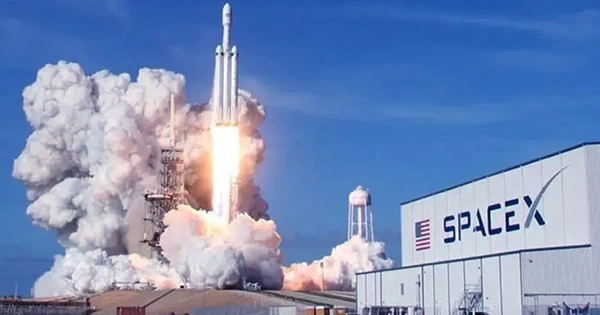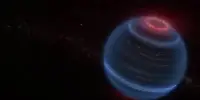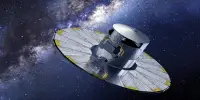SpaceX said a launch taking place as soon as today will deploy the first “V2 Mini” satellites, which provide four times more per-satellite capacity than previous versions, as Starlink speeds slow due to a growing capacity crunch.
The V2 Minis and the larger V2 spacecraft are among Starlink’s second-generation satellites. The V2 Minis are scaled-down versions that can be launched from the Falcon 9 rocket, while the larger V2s are intended for the SpaceX Starship, which isn’t quite ready to launch yet.
Don’t be misled by the moniker, SpaceX warned in a statement yesterday that “the V2 Minis are smaller than the V2 satellites (hence the name). The V2 Minis have improved phased array antennas and use E-band for backhaul, allowing Starlink to offer about 4 times as much capacity per satellite as previous versions.
Despite the fact that SpaceX’s first-generation satellites were built for an aggregate downlink capacity of 17 to 23Gbps per satellite, the company did not state how much data each V2 Mini satellite can deliver. We enquired about SpaceX’s per-satellite capacity for the V2 Mini and whether existing user terminals put in place at customers’ homes can fully benefit from the speed boosts. If we hear back, we’ll update this piece.
Of the 30,000 second-generation satellites scheduled, SpaceX recently received approval from the Federal Communications Commission to launch 7,500 of them. 21 V2 Minis would be launched into orbit by a SpaceX Falcon 9 launch that is tentatively planned for today.
“Space weather is something to keep an eye on, and the two-minute launch opportunity opens at 6:13 p.m. ET (23:13 UTC)… There is a backup chance on Tuesday, February 28 at 1:49 PM ET (18:49 UTC), if necessary “said SpaceX.
The larger V2 satellites, which can’t launch until Starship is ready, will have the ability to transmit signals directly to mobile devices; SpaceX and T-Mobile will use this capability in a collaboration that was revealed in August 2022.
Starlink speeds drop amid price hike and data cap
For the second-generation satellites to make a discernible difference in broadband speed, numerous launches will probably be necessary. Nearly 3,700 first-generation satellites of Starlink are in orbit, but as more subscribers join up, speeds have slowed. People who want Starlink must join a waiting list in many areas of the US.
Price adjustments have already been made by SpaceX, possibly to handle capacity constraints. Residential customers in “limited-capacity” areas received notice from Starlink last week that their monthly service fees would rise from $110 to $120, while customers in “excess-capacity” areas would pay only $90 moving forward.
Additionally, Starlink has implemented a new data limit, under which users who exceed 1TB in any given month will experience slower speeds unless they pay an additional fee for higher-speed data.
The V2 Minis, despite their name, are larger and heavier than the first-generation Starlink satellites, which each weighted about 295 kilograms. According to Spaceflight Now, each Starlink V2 Mini satellite weighs about 1,760 pounds (800 kilograms) at launch, making them almost three times heavier than the older Starlink satellites. They are also bigger, filling more of the payload fairing on the Falcon 9 rocket during flight, with a spacecraft body that is over 13 feet (4.1 meters) broad.
Starlink was able to deploy about 60 satellites per launch with the smaller first-generation ones, as opposed to the 21 second-generation ones scheduled for flight as soon as today.













